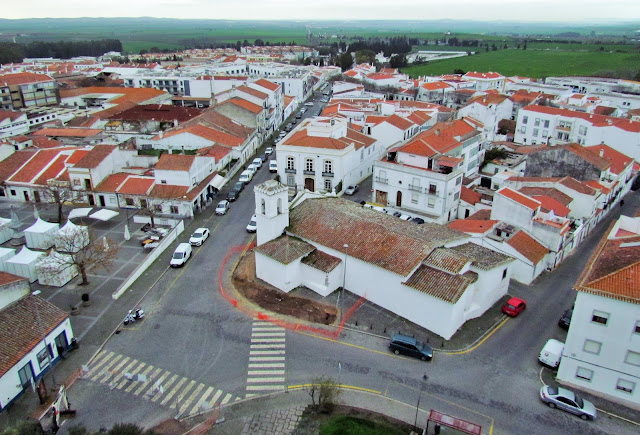BEJA
38° 01′ 59.88″ N, 7° 52′ 59.88″ W
Beja is a Portuguese city belonging to the region of Alentejo and sub-region of Baixo Alentejo, capital of the district of Beja and capital of Baixo Alentejo with about 23 400 inhabitants in its urban perimeter.
It is the seat of the homonymous municipality of Beja, one of the most extensive municipalities in Portugal, with 1 106.44 km² in area and 35 854 inhabitants (2011), subdivided into 12 parishes. The municipality is limited to the north by the municipalities of Cuba and Vidigueira, to the east by Serpa, to the south by Mértola and Castro Verde and to the west by Aljustrel and Ferreira do Alentejo.
The Carthaginians settled in Beja for some time, in the 3rd century BC, just before their defeat and expulsion from the Iberian Peninsula by the Romans, with the city gaining importance due to the fact that one of the Roman roads passed through there.
In the 5th century, after a brief period in which the Alanos had been the headquarters, the Suevi took over the city, succeeding the Visigoths. In the 5th century, after a brief period in which the Alanos had been the headquarters, the Suevi took over the city, succeeding the Visigoths. From the year 714 (eighth century) to the year 1162 (mid-twelfth century), for more than 400 years, its importance diminished, and it was under the possession of the Arabs.
Climate
The climate in the city of Beja (the country's hottest district capital) is Mediterranean (Csa, according to the Köppen-Geiger climate classification), influenced by the distance to the coast. It has mild winters and hot, long summers. Snow is not very common, but it can sometimes snow in colder winter periods. The maximum in January is 14 ° C and in July it is 32.8 ° C. The minimum is 5 ° C in January and 16 ° C in July and August. The annual average is around 17 ° C. The average annual total precipitation is 572 mm. The highest temperature recorded was 45.4 ° C and the lowest -5.5 ° C. It is one of the hottest Portuguese cities in the summer.
Economy
The main sources of income are services, trade, and agriculture, before the wheat crop stood out, currently, the olive and vineyard are developing. The city is not very industrialized, but it has a lot of potentials to be.
Queen Dona Leonor Museum
The museum's collection is divided into three distinct areas; archeology, jewelry, and painting.
In archeology, we can find axes of polished stone, and funerary tombstones epigraphed from the Stone Age; from the Roman period there are capitals, numismatics, and common ceramics; some vestiges of the Arab occupation; and from the medieval period, there are mainly fragments of civil and religious buildings in the city. The paleocristian remains can be found in the museum's Visigothic nucleus, in the church of Santo Amaro.
The museum's jewelry is made up of silver from the 16th to the 19th centuries, mainly of sacred origin, but there are also examples of civilians. A piece that stands out is a sixteenth-century white silver desk offered by King Manuel I to the city.
In painting, the museum has a collection of paintings from the 15th to the 17th century from Portuguese, Spanish and Flemish schools.
(HISTORIC HOTEL)
😙😙😙😙😙😙
 |







































































































































































































































































































































































































































































































































































